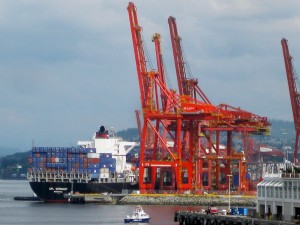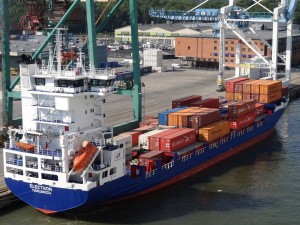 An historic agreement has been reached between Argentina over outstanding debt owed to creditor nations. Creditor nations come together as the ‘Paris Club’ and at a Paris Club meeting on May 28, details of a repayment plan were agreed. Argentina hopes that the agreement will enable it to start borrowing again on international markets: something that had been largely blocked by outstanding debt, which, up to now, Argentina had been unwilling to repay.
An historic agreement has been reached between Argentina over outstanding debt owed to creditor nations. Creditor nations come together as the ‘Paris Club’ and at a Paris Club meeting on May 28, details of a repayment plan were agreed. Argentina hopes that the agreement will enable it to start borrowing again on international markets: something that had been largely blocked by outstanding debt, which, up to now, Argentina had been unwilling to repay.
The problem goes back to 2001. Argentina was faced with international debt payments of $132bn, equalling some 27% of GDP and over 300% of export earnings. But at the time the country was in recession and debts were virtually impossible to service. It had received some help from the International Monetary Fund, but in December 2001, the IMF refused a request for a fresh loan of $1.3 billion
As Case Study 27.5 in MyEconLab for Economics, 8th edition explains:
This triggered a crisis in the country with mass rioting and looting. As the crisis deepened, Argentina announced that it was defaulting on its $166 billion of foreign debt.
This hardly came as a surprise, however. For many commentators, it was simply a question of when.
Argentina’s default on its debts was the biggest of its kind in history. In a series of dramatic measures, the Argentine peso was initially devalued by 29%. Over the next three months, the peso depreciated a further 40%.
The economy seemed in free-fall. GDP fell by 11% in 2002 and, by the end of the year, income per head was 22% below that of 1998. Unemployment was 21%.
Then, however, the economy began to recover, helped by higher (peso) prices for exports resulting from the currency depreciation. In 2003 economic growth was 9.0% and averaged 8.4% per annum from 2004 to 2008.
But what of the debt? In 2005, Argentina successfully made a huge debt swap with banks and other private creditors (see Box 27.1 in Economics, 8th edition). A large proportion of its defaulted debt was in the form of bonds. It offered to swap the old bonds for new peso bonds, but worth only 35% as much (known as a ‘haircut’). By the deadline of 25 February, there was a 76% take-up of the offer: clearly people thought that 35% was better than nothing! At a stroke, bonds originally worth $104 billion now became worth just $36.2 billion. Later the take-up of the offer increased to 93%. But still 7% held out.
Then in 2006 its debt of nearly $10 billion was repaid to the IMF. General government debt stock as a percentage of GDP fell from 172% in 2002 to 106% in 2006 and to 48% in 2010.
In September 2008, the government of President Cristina Kirchner pledged to use some of its foreign currency reserves of $47 billion to pay back the remainder of the defaulted debt still owed to Paris Club creditors. But negotiations stalled.
However, at the Paris Club meeting of 28 May this year, agreement was finally reached. Argentina will repay the outstanding $9.7bn owed to individual creditor countries. This will take place over 5 years, with a first instalment of $1.15bn being paid before May 2015.
Argentina hopes that the agreement will open up access to overseas credit, which, up to now, has been limited because of this unresolved debt. However, Argentina still owes money to the holders of the 7% of bonds who did not accept the haircut offered in 2005. Their claims are being heard in the US Supreme Court on 12 June this year. The outcome will be critical in determining whether Argentina will be able to raise new funds on the bond market.
Argentina clinches landmark debt repayment deal with Paris Club Reuters, Leigh Thomas and Sarah Marsh (29/5/14)
Argentina Will Repay Paris Club Debt 13 Years After Default Bloomberg, Charlie Devereux and Pablo Gonzalez (29/5/14)
Argentina and the capital markets: At least they have Paris The Economist (30/5/14)
Argentina’s Paris Club Deal to Bring Investment, Kicillof Says Bloomberg, Charlie Devereux (30/5/14)
Argentina Leaves Singer for Last in Preparing Bond Market Return Bloomberg BusinessWeek, Camila Russo and Katia Porzecanski (30/5/14)
Argentina in deal with Paris Club to pay $10bn debts BBC News (29/5/14)
Argentina debt deal could help ease re-entry to international markets The Guardian (29/5/14)
Argentina agrees deal to pay back $10bn debt The Telegraph (29/5/14)
Questions
- What is the Paris Club? Why did the recent meeting of the Paris Club concerning Argentina’s debt not include the IMF?
- What moral hazards are involved in (a) defaulting on debt; (b) offering debt relief to debtor countries; (c) agreeing to pay bond holders who did not accept the haircut?
- In hindsight, was it in Argentina’s interests to default on its international debts in 2001?
- Assume a country has a severe debt problem. What are the benefits and costs of using devaluation (or depreciation) to tackle the problem?

